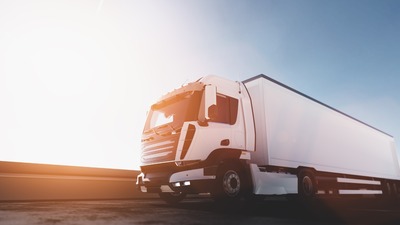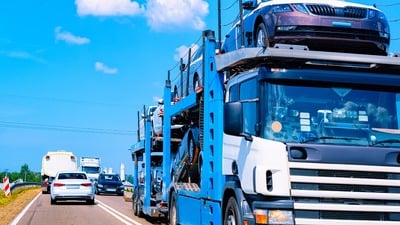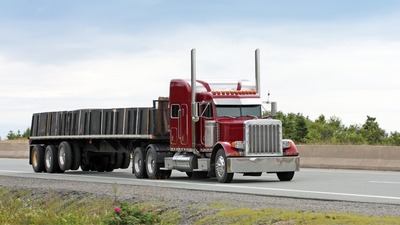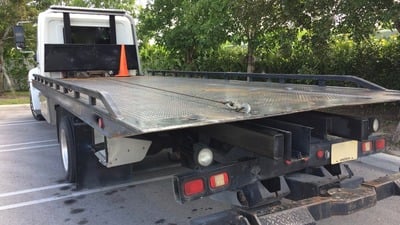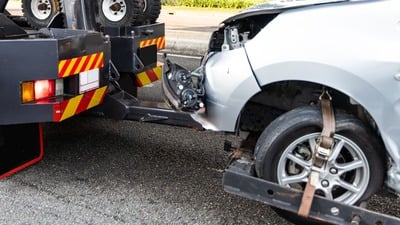Introduction: Understanding the Importance of Trailer Hardware for Safe Hauling
Getting your trailer's hardware right is crucial for safe hauling. Think of it as getting ready for a long road trip. You wouldn't hit the road without checking your car's brakes, tires, and lights, right? The same goes for your trailer. Every part of the trailer, from hitch to tail lights, plays a key role in ensuring that you and whatever you're hauling reach your destination safely. This isn't just about avoiding a flat tire or a breakdown on the side of the road; it's about preventing serious accidents. Whether you're moving furniture, hauling equipment for work, or towing a boat for a weekend getaway, understanding and checking your trailer's hardware is step one in a journey that ends with everything and everyone safe and sound. Remember, a little preparation goes a long way in avoiding a lot of troubles down the road.
The Basics of Trailer Hardware: What You Need to Know
When it comes to trailers, whether you're hauling cargo, equipment, or leisure vehicles, the last thing you want is a breakdown or accident due to inadequate hardware. Let's cut straight to the chase. To ensure your trailer is road-ready and safe, there are a few pieces of hardware you must check and regularly maintain. First up, the hitch. This is how your trailer connects to your towing vehicle. Make sure it's the right type and size for your load and always in good condition. Next, the coupler and the safety chains. The coupler attaches to the hitch and needs to be securely fastened every time. Safety chains are your backup plan; they keep your trailer attached even if the hitch fails. Never overlook their importance. Then, look at the tires and wheels. They should be inflated to the right pressure, free of significant wear or damage, and appropriate for the load and journey. Remember, bad tires lead to bad news on the road. Lights and brakes, these are non-negotiable for safety. Ensure your brake lights, turn signals, and reflectors are all working. If your trailer is heavy enough, it should have its own braking system – make sure it's functioning correctly. Lastly, don't ignore the importance of regular maintenance. Even the best hardware can fail if it's not well-maintained. This rundown is non-exhaustive but covers the essentials to get you started on the right foot. Keep your trailer hardware in check, for peace of mind and safety on the road.
Essential Trailer Hardware List: Must-Have Items for Safety
Every trailer demands specific hardware to ensure safe hauling. This might seem daunting, but don't worry– here's a condensed list of must-have items. First, think of coupling devices; these are non-negotiable for linking your trailer to a vehicle. Make sure it matches your vehicle's towing capacity. Next up, safety chains. They're your backup plan if the primary coupling fails. Cross them under the tongue of the trailer to catch it if a disconnect happens. Lighting is crucial too; your trailer needs to be visible. Tail lights, brake lights, and indicators are mandatory for safe towing, especially at night. Don't forget the wiring harness that connects these lights to your vehicle. Then there's the wheel and tire setup. Regular checks for wear and pressure align with safety standards and prevent incidents. Also, consider having a spare tire and an appropriate jack; they can be lifesavers. The braking system, either electric or surge, depending on what your trailer requires, ensures you can stop safely with a heavy load behind you. Reflectors or reflective tape boost visibility, making your trailer more noticeable to others on the road. Lastly, a good-quality hitch lock keeps your trailer secure when it's not in use. Equip your trailer with these essentials, and you're set for a safer hauling experience. Stay diligent about maintenance, and replace any worn-out parts promptly. Safe travels!
Hitch Types and Their Role in Trailer Safety
Choosing the right hitch is crucial for trailer safety. Essentially, a hitch connects your vehicle to your trailer. Picking the wrong type can lead to accidents. Let's break it down. First, we have the ball hitch. It’s the most common and fits most towing needs, perfect for smaller trailers like those for a family boat or a couple of ATVs. Then, there’s the weight distribution hitch. This one spreads the trailer’s weight across the towing vehicle's axles. It’s your go-to for heavier loads to prevent the trailer from swaying. Don’t forget about the fifth wheel hitch. Specifically designed for heavy-duty towing, it's the type you see on big rigs. It offers stability for large trailers but requires a pickup truck. Lastly, we encounter the gooseneck hitch. Similar to the fifth wheel, but it’s for towing livestock or commercial trailers because of its tight turning radius. In short, choosing the right hitch impacts not just the safety of your load but also everyone on the road. Always match the hitch to your trailer's weight and type. Safe hauling starts with the right connection.
Lighting and Electrical Connections: Ensuring Visibility on the Road
Keeping your trailer visible on the road isn't just smart; it's a must for safety. Let's talk lights and electrical connections, the essentials for making sure other drivers can see you, especially during night drives or bad weather. First off, check your brake lights, taillights, and turn signals. These need to work every time you hit the road. It's not only about avoiding tickets, it's about preventing accidents. If your trailer's lighting is dim or flickers, it's time for a fix or upgrade. Next up is the electrical connection between your trailer and tow vehicle. This powers your trailer’s lights from your vehicle’s electrical system. Give it a good look. Ensure the plug and socket fit snugly. Any loose connections? That’s a no-go. Corrosion or dirt? Clean it up. Remember, a bad connection means your lights might fail when you need them most. Wrap it up by testing your setup in dark or dimly lit conditions to be sure everything’s shining bright. Visibility on the road is all about safety - yours and everyone else’s. Keep that in mind and make lighting and electrical connections top of your checklist
Brakes and Brake Controllers: Stopping Power When You Need It
When you're towing, control is everything. You've got to have the power to stop safely. That’s where brakes and brake controllers come in. Most trailers over a certain weight need brakes to comply with road safety regulations. Two main types are electric and hydraulic. Electric brakes are common for RVs and utility trailers. They work through a controller in your tow vehicle that sends a signal to apply the brakes. Hydraulic brakes—often found on boat trailers—use the tow vehicle's braking system to apply pressure to the trailer's brakes. But, you can't just have brakes, you need a way to control them. Enter, brake controllers. These gadgets install in your tow vehicle and let you manage your trailer’s braking power. Some even adjust braking intensity based on how hard you press your vehicle's brakes. Remember, not all controllers are the same. Time-delayed controllers offer a preset power delivery to your trailer’s brakes. Proportional controllers, on the other hand, match the braking force of your vehicle and trailer exactly, for a smoother ride. You must get this setup right. Too little braking power and you risk uncontrolled trailer sways or even jackknifing. Too much, and you might wear out your trailer brakes faster. Always ensure your brakes and brake controller are properly installed and maintained. It's not just about legality—it's about safety, for you and everyone else on the road.
Tires and Wheels: Maintaining Traction and Stability
Tires and wheels are where your trailer meets the road. They're critical for keeping your cargo safe and your travel smooth. Do not overlook them. Here's the deal: always make sure your tires are in good shape and properly inflated. The right pressure ensures better traction and prevents blowouts. Think about it, a tire failure can be dangerous, especially when you're hauling valuable or heavy loads. Check your tire pressure before each trip. Also, look out for wear and tear. Replace tires with visible damage or excessive wear. It's not just about avoiding flats; it's about maintaining stability and control. As for wheels, keep them tight. Loose wheels can lead to serious accidents. Check the lug nuts every now and then, especially before long hauls. Remember, your trailer's performance heavily relies on its tires and wheels. A little attention goes a long way in ensuring a safe journey.
Cargo Security: Straps, Nets, and Tie-Downs for Safe Transport
When it comes to hauling, your number one goal is to get your cargo from point A to point B without any mishaps. That's where cargo security comes into play. It's not just about throwing stuff on your trailer and hitting the road. You need the right gear to ensure everything stays put. Straps, nets, and tie-downs are your best friends here. With straps, you're looking for durability and strength. They come in various materials, like polyester and nylon, and it's crucial to pick one that can handle the weight of your cargo. Nets are great for irregular items or loads that aren't easily strapped down individually. They provide a layer of security that keeps everything under one tight cover. Then there are tie-downs - these are the anchors that hold your straps or nets in place. You need to make sure they're properly attached to your trailer and can bear the load without giving way. Always double-check the weight ratings on your straps, nets, and tie-downs. Exceeding these could lead to failures, and that's the last thing you want when you're cruising down the highway. Remember, securing your cargo properly is not just about protecting your stuff; it's also about being responsible and ensuring the safety of everyone on the road.
Regular Maintenance Tips for Trailer Hardware
Keeping your trailer in top shape requires regular maintenance. Let’s break it down to the essentials. Firstly, check the wheel bearings. If they're worn out, replace them. Ignore this, and you're risking a wheel popping off mid-journey. Next, inspect the lights. All signals should work perfectly to ensure you’re visible and communicating effectively with other drivers. Don’t forget the brakes. If you have them, they need to be responsive. Any lag is a no-go. The hitch also demands a look-over. It should be free of rust and fit securely. A faulty hitch means you might be leaving your trailer behind unintentionally. Lastly, examine the tires. Look for wear and ensure they're properly inflated. Flat or worn-out tires can lead to dangerous situations. Stick to this checklist, and your trailer will be ready for safe hauling anytime. Simple, right?
Conclusion: Final Checklist Recap and Safety Reminders
Before you hit the road, double-check your trailer's setup. It's the smart move. Here's a condensed version of everything we've covered. Make sure you have:
- Hitch ball and coupler are securely fastened. They're the big deal in connecting your trailer to your vehicle.
- Safety chains in place. They're your backup plan in case the main connection fails. Cross them for extra security.
- Lights and signals are working. That's how you talk to other drivers on the road. Check all brake lights, turn signals, and parking lights.
- Tires are properly inflated. They carry the weight and keep your trailer moving smoothly. Don't forget to check the spare tire too.
- Brakes, if your trailer has them, are functioning. They help you stop safely, especially with heavy loads.
- Load is balanced and secure. An uneven load can make driving dangerous. Secure everything, so nothing shifts or falls off.
- Mirrors adjusted for good visibility. You need to see what's behind you, especially when changing lanes or reversing.
Always follow the law and wear your seatbelt. Remember, hauling a trailer adds extra responsibilities. Safe hauling isn't just about getting your stuff from A to B. It's about making sure you, your vehicle, and everyone else on the road gets home without a scratch. Check everything, then check again. It's better to be safe than sorry. Drive safe!

